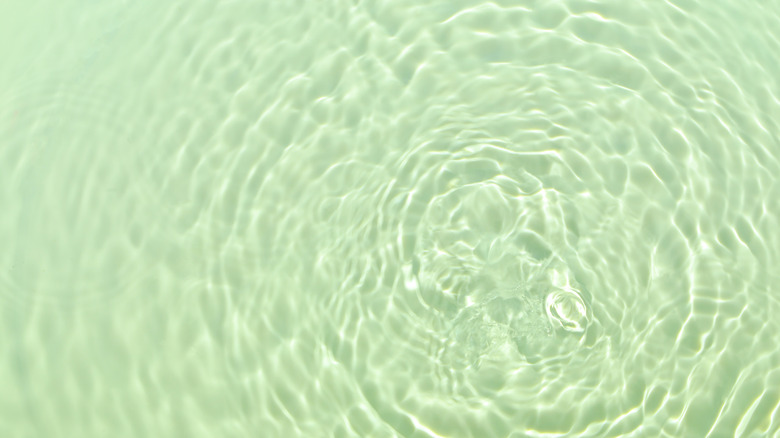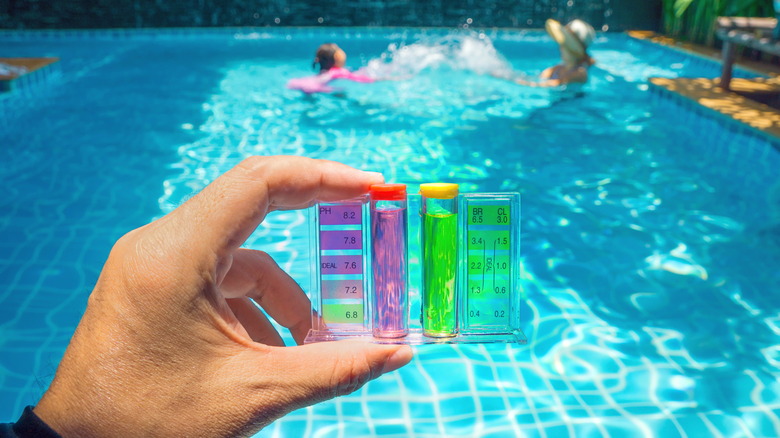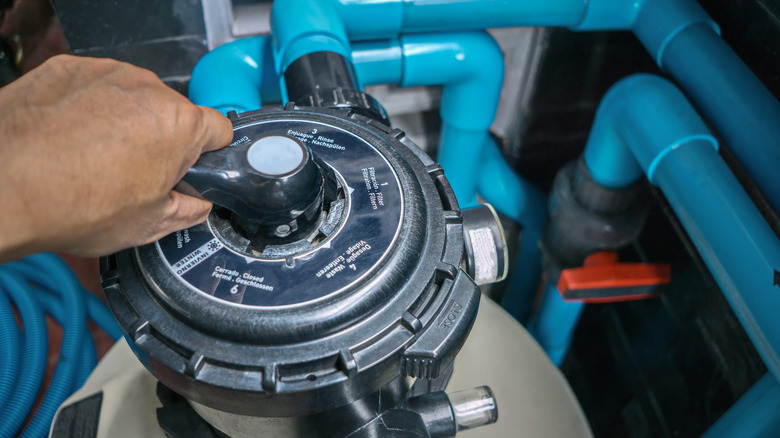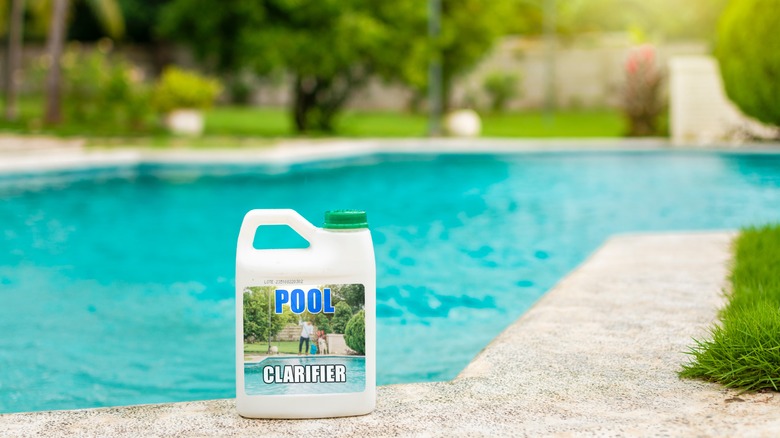The Fastest Fix For A Green Pool That Will Bring It Back To Clear Blue
Pool maintenance can be incredibly difficult for homeowners in all corners of the United States. Keeping the pool a crystal blue shade is almost exclusively the goal of pool owners, yet this task brings about a continuous battle with the natural environment that the pool exists within.
Swim University reports that the culprit — each and every time you face off against a greening pool — is algae growth. Algae produce this tint in water features, and as the bloom grows in magnitude, your pool begins to change from a light green to a much darker shade. Allowing algae to gain a foothold in the pool happens more often than homeowners would like, especially during the winter. However, this growth isn't difficult to defeat. What's more, with a consistent approach to clearing up algae bloom in the pool, you can resolve the issue in a week or less, returning your pool deck to service and the water to a crystal clear blue tone that's inviting and looks great.
Pool Care Guy notes that this approach can be used to remedy a pool that has become green with advanced algae growth, or as a means to maintain an algae-free, blue pool for many years at a time. Whether you're trying to return your pool to use or looking to keep it that way, the strategy remains the same.
Reduce the pH level as quickly as you can
The condition that allows algae to flourish in your pool is a high pH level (via Pool Care Guy). An imbalance in the acidity of the aquatic environment provides the medium for algae to grow without brakes. According to Better Health (The Victoria State Government), a properly balanced pool should rest between 7.0 and 7.6 when tested. Any lower and the pool water will become notably acidic, stinging the eyes of swimmers. On the other hand, a more base acidity (8.0 or higher) will not maintain the bacteria and algae killing capabilities that are necessary to keep the pool chemistry in check and the water suitable for swimming. A pH of 7.0 sits right in the middle of the scale. This level maintains acidic neutrality and a healthy balance between the cleanliness needs of the water and a marine environment that doesn't pose a health risk either (resulting from contact with a highly acidic substance).
Optimal swimming conditions within this healthy range can vary based on location and environmental factors, but during the remedy for a green buildup, you'll want to promote a more acidic environment throughout the cleaning. Keeping the pool at a pH level under 7.2 will help speed up the algae control and prevent clouding in the remaining steps, according to Pool Care Guy.
Maintain active filtration throughout the cleaning
After shifting the pH balance in your favor, the transformation is something of a waiting game. Algae cannot continue to thrive in this new environment and will slowly die off over time. To speed along the change, though, you'll want to actively move the aquatic environment through a filtration system. Algae grow dramatically in water that is standing still (via LG Sonic), so just the act of sweeping the pool on a daily (or, for severe cases, even twice-daily) basis can help minimize the problem faster. Changing the pH level in the environment and then removing the stillness that allows algae to thrive will short circuit new growth and give you the edge you need to take care of the existing bloom directly.
Running the pool pump also makes a big difference here. Sweeping disturbs the water, shaking up static algae growth and placing it into a flow. With the pool pump running as well, you'll see a change in the environment in rapid time because the now-mobile particles that once clung together at the bottom of the pool (and throughout the water, as well) can be sucked through the filtration unit and removed from the system entirely. These processes, when used together, go a long way in efficiently defeating algae growth in any home pool.
Use algaecide to stop further growth in its tracks
The final step in the process of returning your pool to a deep blue shade is the use of algaecide. After shocking the pool and dropping the pH, sweeping, and running the filtration unit, you may think that the fix has been completed. After all, these tactics do an admirable job of rooting out algae growth and quickly changing the color of the pool area back to something that feels comforting and inviting.
Yet, algae grow quickly, and without continued care and routine maintenance focused on the water's chemistry, you may see a sudden resurgence of algae growth. Using the pool and maintaining these prior practices will help keep the algae at bay, but if your environment still harbors algae spores, it's only a matter of time before they find a foothold. This might come while you are away for a long weekend or during an extended rainy period that sees your maintenance and use drop off, for instance. Algaecide is a simple product to use and will ensure that any remaining algae spores still hiding within the pool water are killed off (via Pool Care Guy). In the process, this final step creates an environment that won't revert back to green at the end of the summer or with a short period of non-use.



